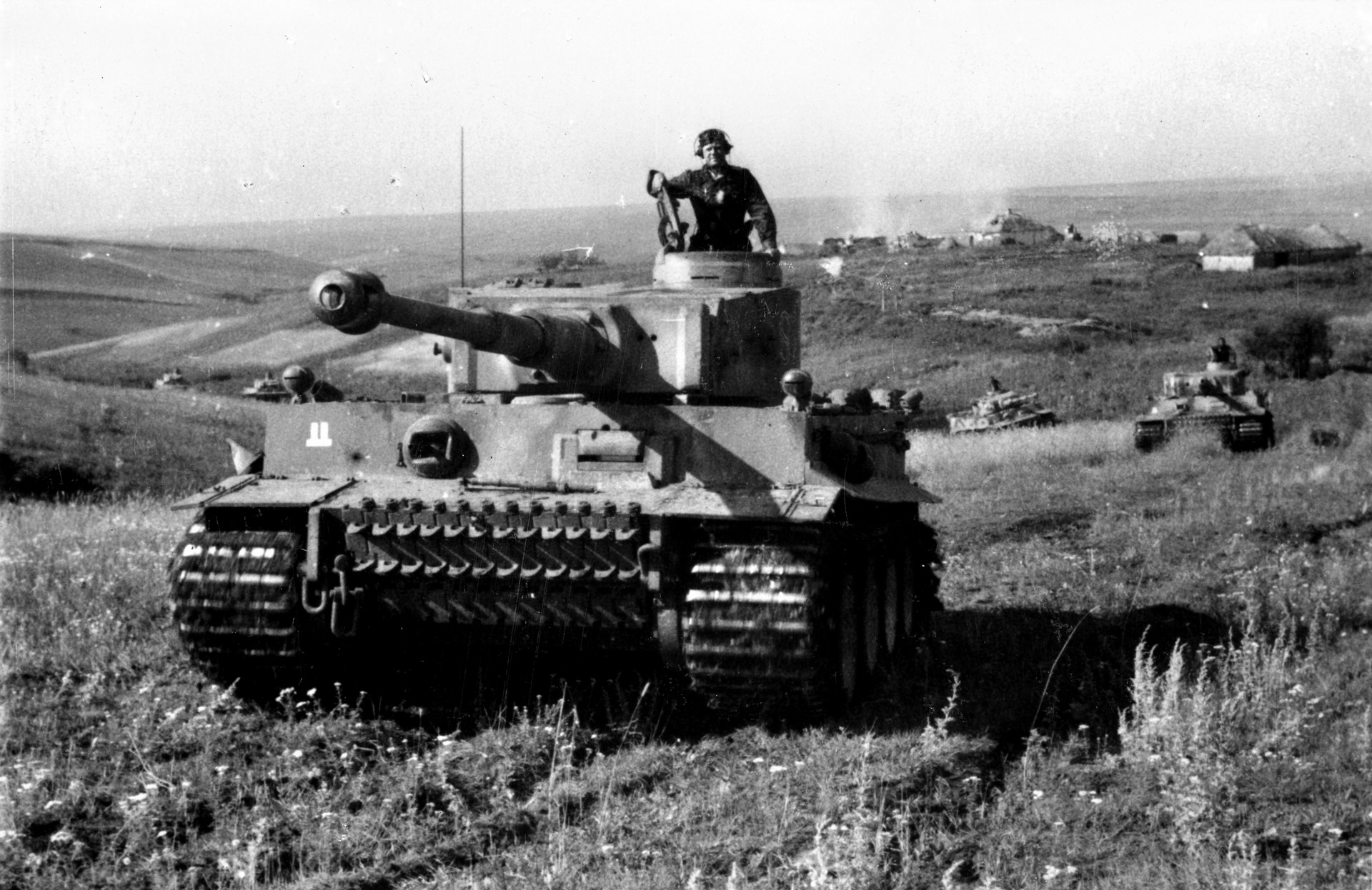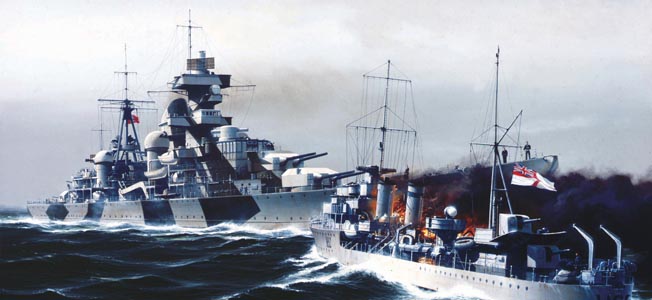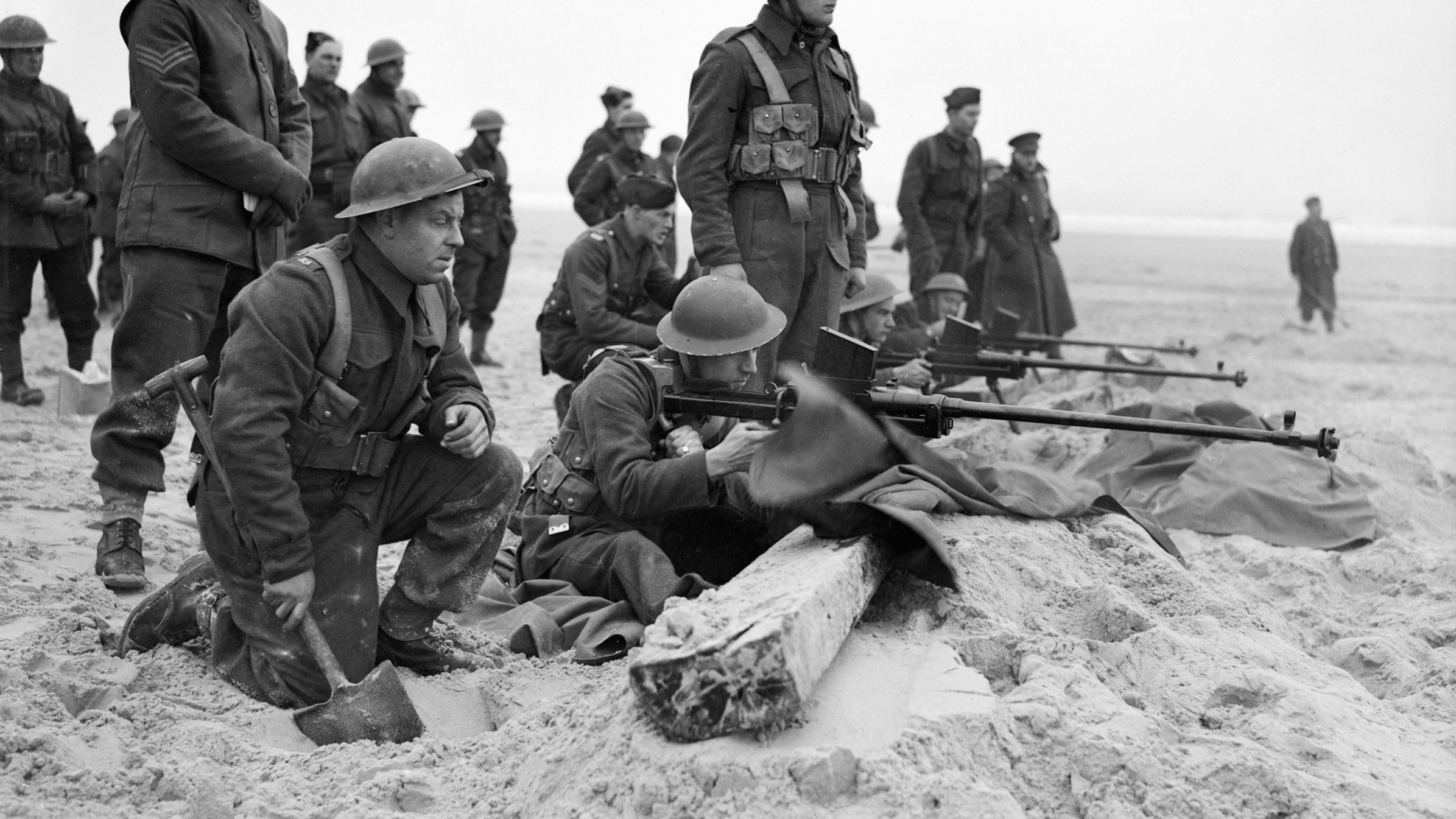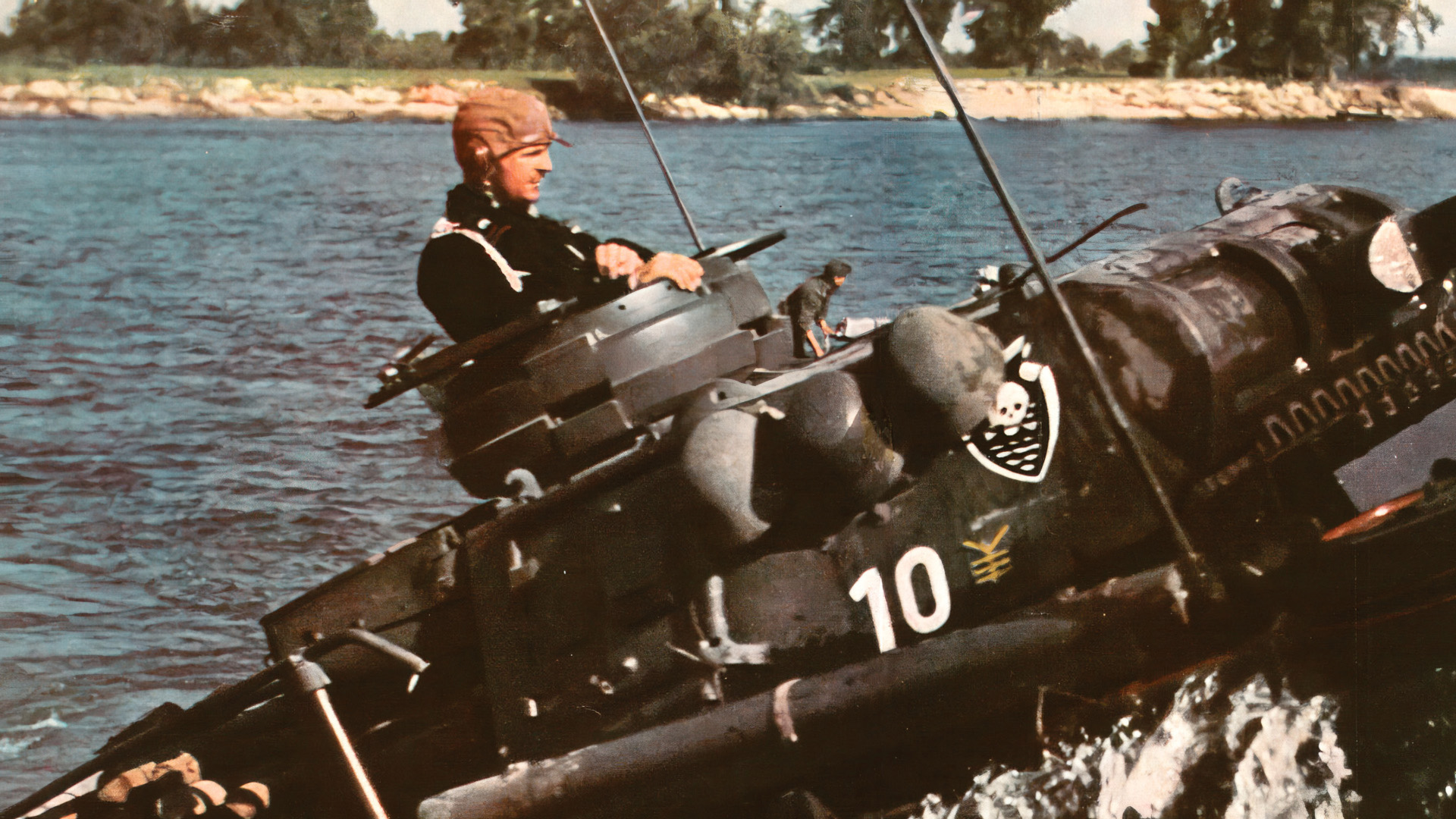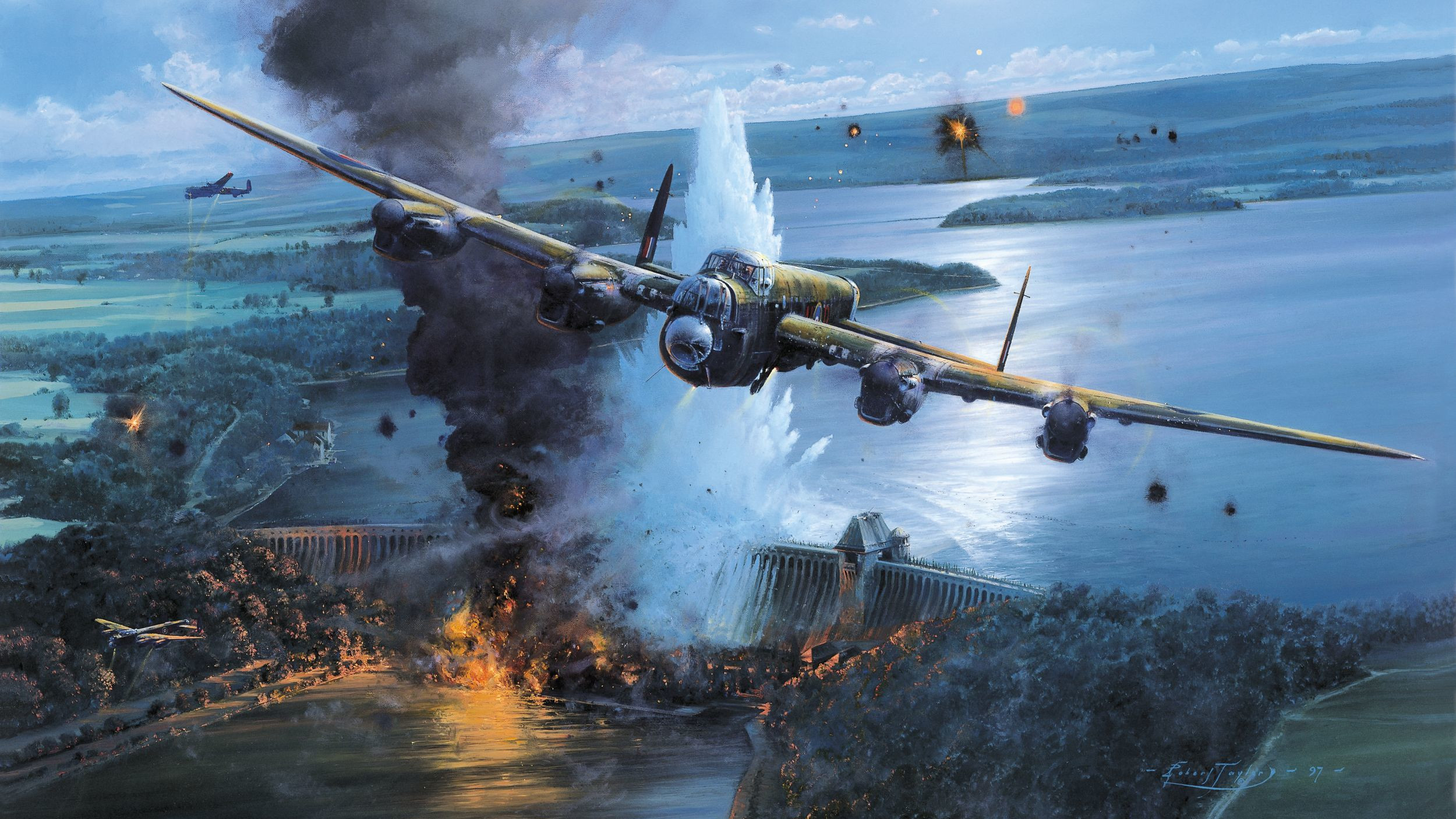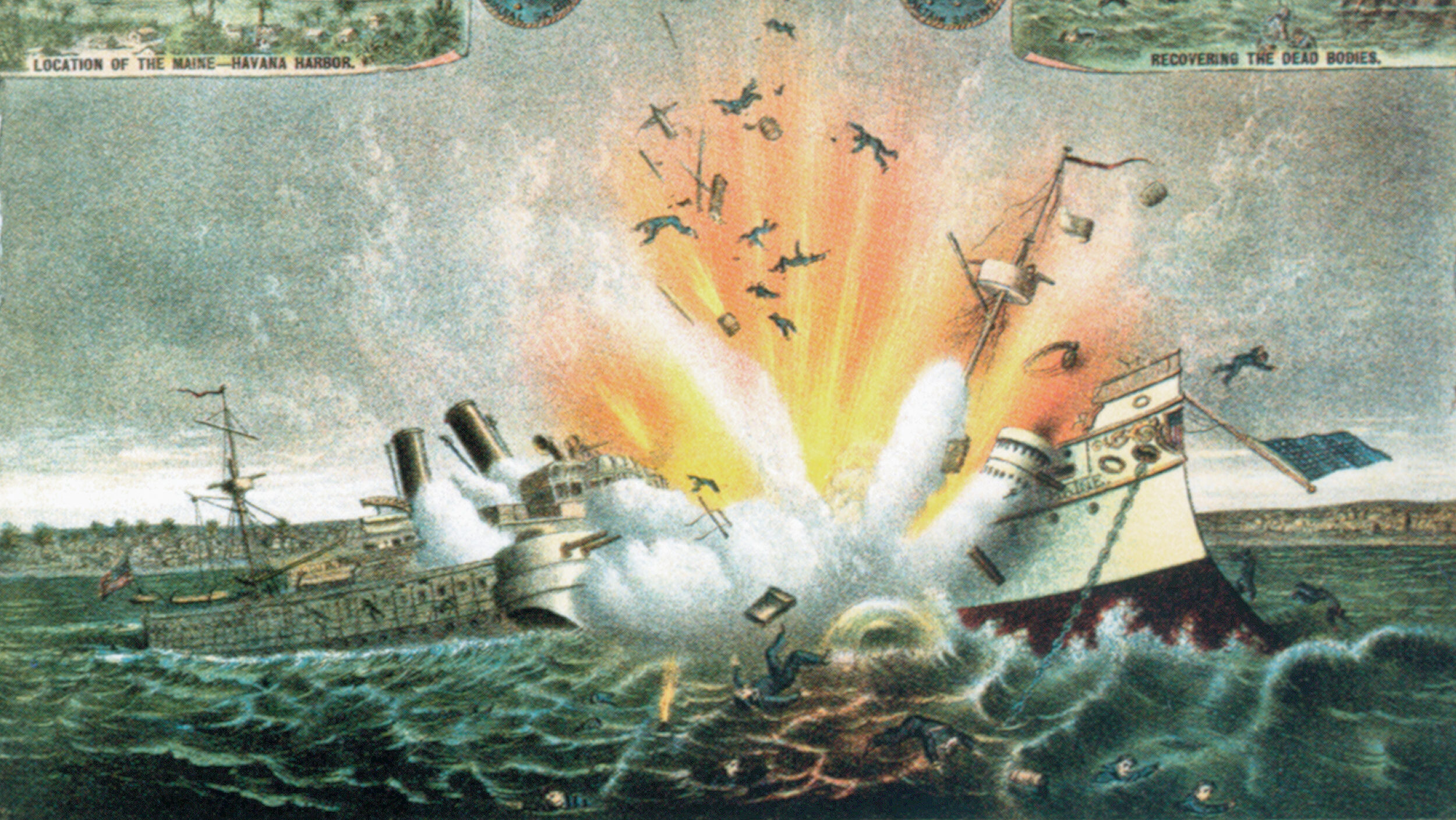By Mark Carlson
In one of the most gripping scenes of the 1960 motion picture Sink the Bismarck! the viewer is witness to the climactic moment of the Battle of the Denmark Strait on May 24, 1941. As Bismarck’s huge 15-inch shells scream in an unearthly howl from the skies, the mighty battlecruiser HMS Hood, pride of the Royal Navy, is straddled by towering columns of water. A portentous moment in time seems to freeze, then the massive warship erupts into a fireball that leaves only floating debris.
In those horrifying seconds, the lives of 1,415 British officers and seamen were ended. The sinking of Hood was the single worst disaster to the Royal Navy in its four centuries of existence. Hood was a favorite in Britain, and her loss was a terrible blow to British pride.
It was also Bismarck’s only victory. Three days later, she too lay on the bottom of the Atlantic, a victim of German hubris and British vengeance.
Hood was sunk three minutes after the first shot was fired. How could such a powerful warship be destroyed in the blink of an eye?
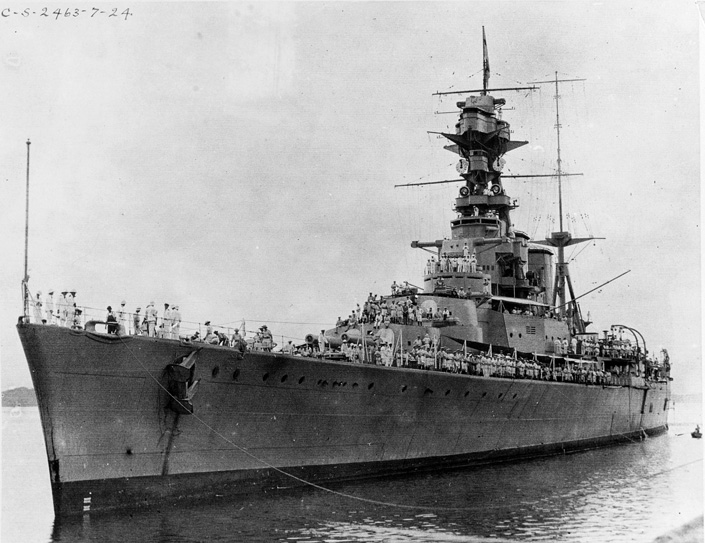
The first public announcement from the Admiralty on May 24 reported, “HMS Hood received an unlucky hit in a magazine and blew up.”
In two best-selling books by C.S. Forester and William Shirer, the descriptions of how Hood died have become the stuff of seafaring folklore. Supposedly, the Hood had what was euphemistically called a “chink” in her deck armor on the boat deck between the two funnels. A 15-inch armor-piercing shell struck at this spot at exactly 5:56 am and penetrated six decks and six bulkheads to explode in the main powder magazine, igniting 300 tons of high-explosive cordite. Several jets of flame and smoke burst from her superstructure, and a huge sheet of fire rose between the funnels to a height of 1,000 feet. A massive gray cloud cleared and revealed the bow and stern of Hood jutting out of the water like “two sharks until they sank.”
These accounts have long since been accepted by the general public, but they fall short in two major areas: there was no so-called “chink” in Hood’s deck armor, and there was no main gun magazine in that area to destroy Hood. The two forward and two after gun barbettes were separated by nearly 400 feet. The intervening space under the funnels was occupied by the 24 Yarrow boilers and their uptakes. So the question remains: how could it have happened? The answer lies in the battleship-building race between Germany and Great Britain prior to World War I.
The battlecruiser concept, which had a relatively short career in naval history, was first set down by the father of the modern Royal Navy, First Sea Lord Admiral Sir John Arbuthnot “Jacky” Fisher. After ramrodding the innovative new HMS Dreadnought into being in 1906, Fisher developed the idea of heavily armed but lightly armored battlecruisers. Beginning with HMS Invincible in 1907, Fisher had decreed that in all British battlecruisers, “weight in armor should be sacrificed to weight invested in larger guns and heavy propulsion machinery to generate higher speeds.” The German Navy, on the other hand, felt that a warship’s primary job was to remain afloat to fight, and therefore chose to accept lower speed and smaller gun caliber in favor of thicker armor. Larger in gross tonnage and length than battleships, battlecruisers were faster and only meant to serve as long-range scouts ahead of the main battle fleet. While they were never intended to engage enemy battleships, their big guns were too tempting for aggressive fleet commanders to discount in battle. In addition to the thinner armor, both German and British battlecruisers had one fatal flaw.
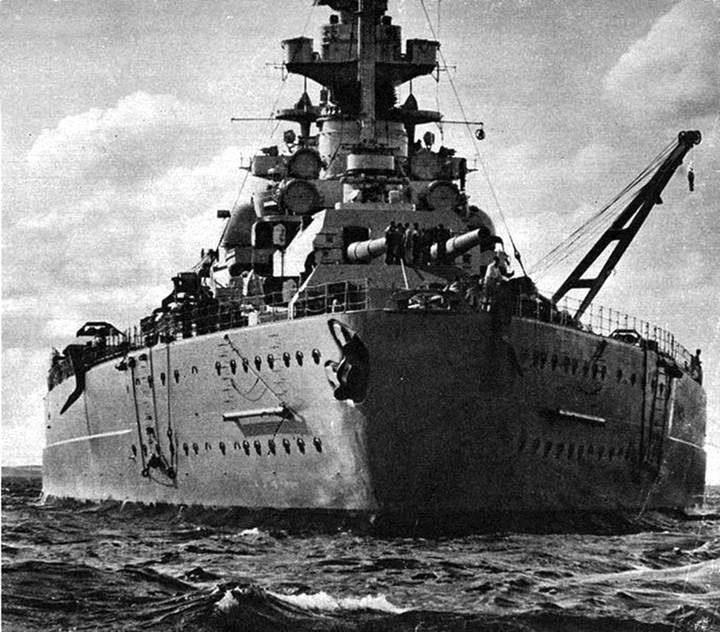
During the Battle of Dogger Bank on January 24, 1915, the SMS Seydlitz, flagship of the German battlecruiser force, had received a hit on one of her after gun barbettes. The flash from the explosion shot down the trunk to the shell room and powder magazines located below the waterline. The ship was in imminent danger of exploding, but prompt action by an officer flooded the magazine and saved the ship. The danger was recognized, and the German Navy began to install double sets of antiflash doors in the barbettes of every capital ship. Both doors could not be open at the same time, so an explosion in the turret was stopped before it reached the powder magazines. The Royal Navy, however, remained blissfully unaware of this fatal flaw in its capital ships.
It was at the climactic Battle of Jutland a year later that three of Admiral Sir David Beatty’s battlecruisers exploded from exactly the same type of catastrophic hit on a turret. After watching HMS Indefatigable, Invincible, and Queen Mary explode, Beatty said laconically, “There seems to be something wrong with our bloody ships today.” Fisher’s decree was reaping a deadly harvest.
The battle also saw an hour-long duel between the battleships of the German High Seas Fleet and the British Grand Fleet, none of which were lost or seriously damaged. This was undoubtedly due to the battleships’ thicker armor preventing armor-piercing shells from penetrating the turrets. In any event, Jutland patently displayed the design fault in the turrets, and changes were made throughout the fleet. Even after the disastrous losses of Jutland, Britain never considered doing away with the big, fast battlecruisers.
When Hood was first designed in 1916, she was to be larger, faster, and more heavily armed than the biggest battlecruiser ever built up to that time. For the four proposed Admiralty-class battlecruisers, which included Hood, heavier hull and deck armor were added, which increased her displacement to more than 45,000 tons, making her 3,000 tons heavier than the later King George V-class battleships (1939) and 10,000 tons more than the Nelson-class battleships (1925). But in deference to Fisher’s vision, her armor was significantly thinner in order to reduce her displacement and increase her speed.
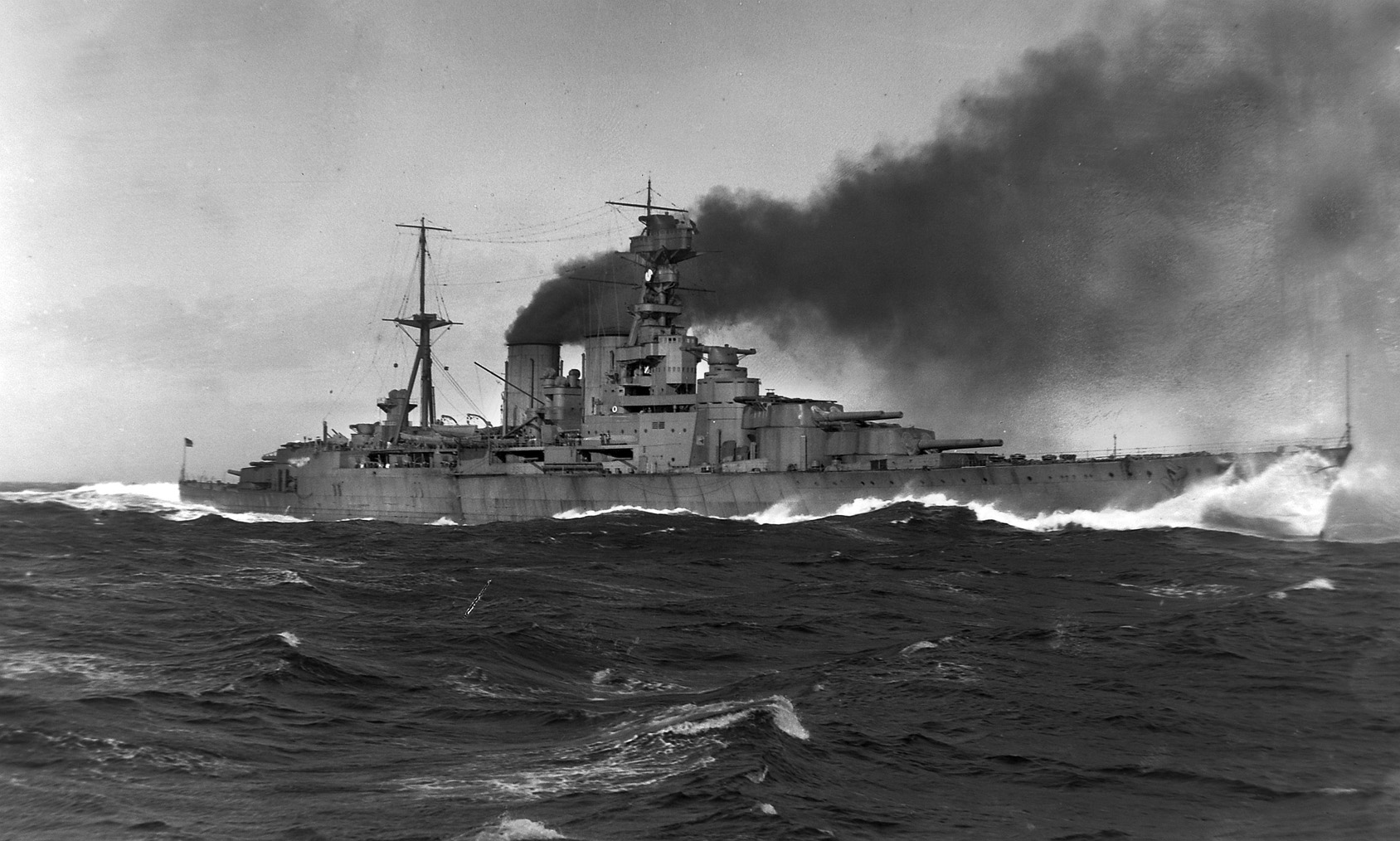
The numbers leave little doubt. In 1941, Hood’s main protection was along her hull against heavy shells and torpedoes. The belt was six inches thick at the bow and stern and increased to 12 inches along the most sensitive areas, such as the magazines and boilers. On deck, the steel was two inches at bow and stern and increased in thickness to just over six inches on both the main and boat decks. The barbettes, the main structure of the turret assembly, were sheathed in 12 inches of steel. The turret housings, the part that actually enclosed the guns, had 15 inches of armor on the front, which was intended to face the enemy warships, and 11 inches on the sides and rear. Despite the hard lessons of Jutland, though, Hood’s turret roof armor was only five inches thick, an inch less than the deck armor plate.
While this would seem adequate, consider that a battleship of the same era usually had hull and deck plating that ran between 12 and 15 inches in thickness. This would stop or deflect the heaviest armor-piercing shells then in existence. Bismarck had 14 inches of steel on her hull and nearly as much on the four turrets.
There is no evidence that any of Bismarck’s shells penetrated Hood’s barbettes in those three minutes of battle. Rather, it is well established that the fatal blow struck somewhere amidships in a manner that managed to convey the detonation to one of the battlecruiser’s after powder magazines, which were located six decks down in the very bowels of the vessel. Considering her size, this bears closer examination. Accounts from witnesses on the light cruisers Suffolk and Norfolk and survivors from Bismarck described the cataclysm. Hood was already 20 years old in 1941. Bismarck had the newest and most advanced fire-control systems. Hood’s only advantage was in the weight of her armor-piercing projectiles, which weighed 1,900 pounds as compared to her opponent’s 1,800-pound shells. Yet even with heavier shells, Hood’s 29,000-yard maximum range was 6,000 yards less than Bismarck’s.
We must examine the actual circumstances of the battle to determine how Hood died. The Denmark Strait, a wide channel running northeast to southwest that separates Greenland from Iceland, was where Bismarck and her smaller consort, the heavy cruiser Prinz Eugen, were making their break for the open Atlantic. The Royal Navy had two light cruisers patrolling in the strait to shadow the two German warships until the Hood and battleship HMS Prince of Wales could arrive. There was little doubt that Hood, the most powerful warship in the fleet, could easily take care of Bismarck.
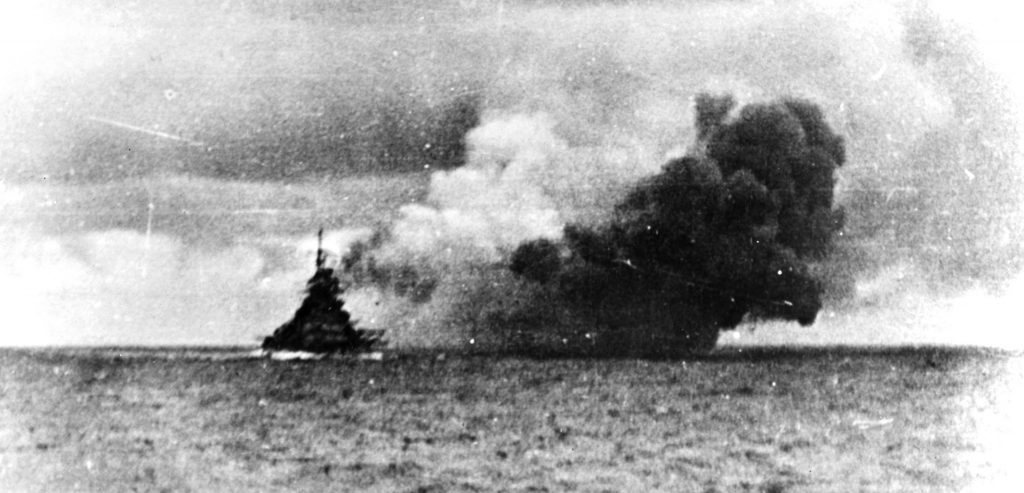
When the British and German squadrons first sighted each other at 5:30 am, the distance was 28,000 yards (15.8 miles), which put them on each other’s horizon. Hood, initially southeast of Bismarck and Prinz Eugen, was silhouetted against the rising dawn, while the Germans were still lost in the gloom. This gave the Germans the initial advantage. Hood opened fire at extreme range, but due to the fact that the slightly smaller Prinz Eugen had nearly the same silhouette as Bismarck and was in the lead, Rear Admiral Lancelot Holland, commanding the British squadron, concentrated Hood’s fire on the cruiser. Conversely, both German ships aimed at the distinctive shape of the Hood, which was ahead of the Prince of Wales. Hood’s first salvo, fired at a range of 25,000 yards at 5:52 am, fell short. Holland, realizing they needed to be closer, ordered a 20-degree starboard turn to the southwest to bring the two Royal Navy warships closer to Bismarck and Prinz Eugen. But the turn toward the Germans masked the three after turrets of the Prince of Wales and Hood, depriving them of nearly half their firepower in the opening stage of the battle.
On Bismarck’s bridge, Admiral Günther Lütjens ordered Captain Ernst Lindemann to open fire on Hood at 5:55 am. On Hood, Holland saw the bright flashes of Bismarck’s eight heavy guns. A few seconds, later he heard a roar like a speeding freight train as the huge shells screamed overhead. Tall, white waterspouts towered as high as Hood’s foremast. A sudden, sharp shudder shook the 45,000-ton warship. Hood had been hit. Still, the old battlecruiser bore in, her guns reaching out to her distant enemy. Again, the flashes, and again, the roar of heavy shells tore over Hood. Prinz Eugen added her eight smaller guns to the deadly duel but did little damage.
With their advanced fire-control systems, the two German ships were able to loose four broadsides at the British. Prince of Wales, fresh out of the builder’s yards, was unable to get all her guns going. Hood was only able to use her forward turrets. The range had closed to 16,500 yards when Holland ordered a turn 20 degrees to port, unmasking the after guns. It was 5:56 am. Then, a shell from Bismarck’s fifth salvo struck close to the battlecruiser’s mainmast on the boat deck. That was the killing blow. The sound of Hood’s destruction roared over the cold waters of the Denmark Strait and echoed off the distant icy shore of Greenland.
Three minutes later, the mighty Hood was gone, her torn remains settling into the icy black waters 150 fathoms below. Three survivors of her crew of more than 1,400 were picked from the freezing water.
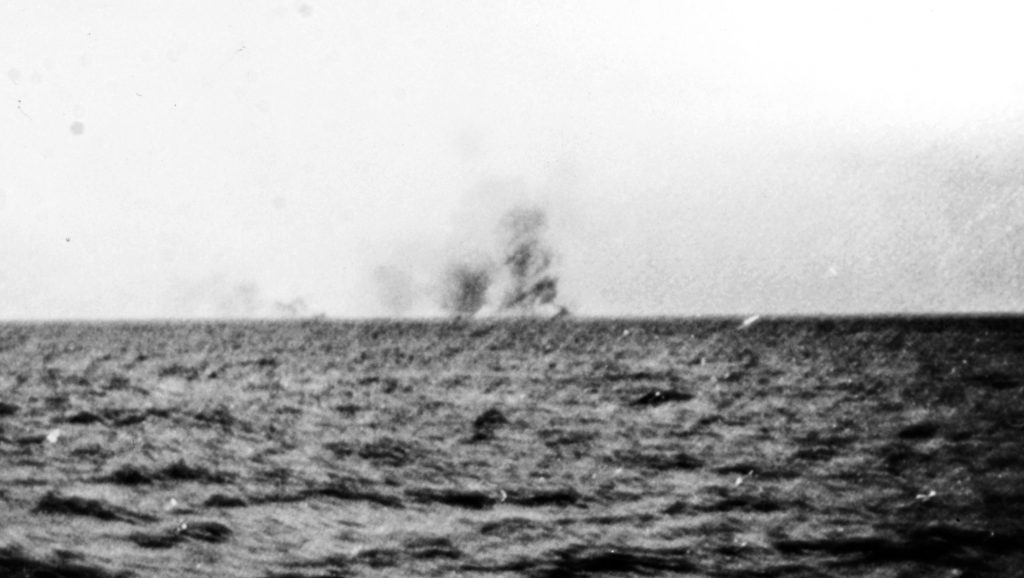
To the majority of witnesses, the explosion was amidships near the funnels. Hood’s after portion seemed to break away from the main hull and sank first. Apparently one or more of the magazines had exploded in the after portion of the hull, dooming Hood in seconds.
Prince of Wales, aft of Hood, had a view that revealed a more accurate account. Captain John C. Leach on Prince of Wales’ bridge later described the column of flame shooting up from the vicinity of Hood’s mainmast, which was on the after portion of the boat deck and just forward of the after turrets. He said the blast obscured and then obliterated the entire after portion of the Hood. While there were no main guns on the amidships superstructure, it did contain the 12 Mk XVI twin-mount, dual-purpose 4.1-inch guns, each of which had its own magazine holding 200 shells.
The official board of inquiry report, released on June 2, 1941, stated that “the probable cause of the loss of HMS Hood was direct penetration of the protection by one or more 15-inch shells at a range of 16,500 yards, resulting in the explosion of one or more of the aft magazines.”
While the findings were straightforward, they came under criticism. The circumstances of the battle and its aftermath meant that there were no immediate verbatim statements taken from any of the witnesses, neither British nor German. Other theories subsequently emerged, including one in which Hood had been destroyed by the internal detonation of her own torpedoes, located in the hull aft of the rear funnel. Hood did carry 28 torpedoes, theoretically more than enough to destroy her. But from the start, there was good reason to discount this theory.
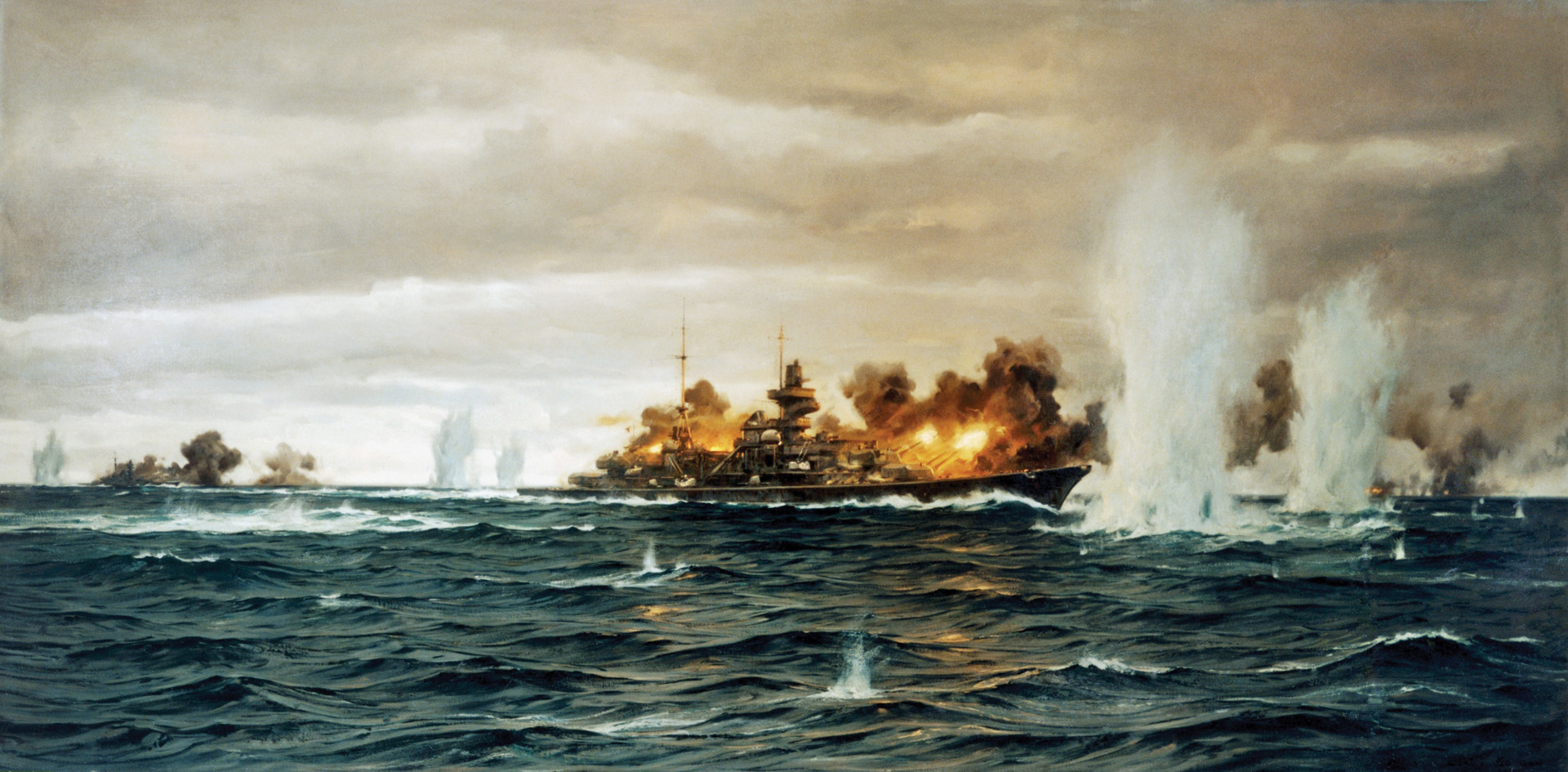
A second inquiry held in September, which took into evidence the testimony of more than 100 witnesses, was more thorough, but it came to the same conclusion. Hood died from an explosion in either her 4.1-inch or 15-inch after magazines. The most likely probability was that the 4.1-inch magazines, located closer to the mainmast, exploded first, starting an instantaneous chain of explosions in the larger magazine. This seems to fit the eyewitness accounts. If a shell had penetrated at this point, it would have started an intense fire in the engine room that would have torn through the ventilators into the after powder magazines. Another element that supports this theory were the multiple eruptions of smoke and fire witnessed by surviving Germans from Bismarck that seemed to shoot up from the engine room vents. The engine rooms were located aft of the boilers on either side of the barbettes and magazines. If either an explosion in the after 4.1-inch magazines or the boiler rooms occurred, the blast would almost certainly have destroyed the bulkheads, which were only four inches thick.
The original long-accepted view of a “chink” in the deck armor allowing a shell to detonate the magazines must be addressed. When Hood exploded, the combatants were about 16,000 yards apart, which meant that Bismarck would have had her guns elevated to about 14 degrees. This made the shells’ trajectory nearly flat. Any shell coming in from an angle of 14 degrees could not have reached Hood’s after magazines without first penetrating the 12-inch hull armor belt. While a so-called weak spot might have allowed a shell to enter the superstructure, the projectile would not have gone downward. At most, it would have torn across the width of the superstructure. Of course, this is where the 4.1-inch barbettes were located, with their corresponding magazines just below.
The 2001 discovery and exploration of Hood’s wreck revealed that her after portion is separated from the hull, which reveals that the hull broke apart on the surface. The rudder is still set at port. Curiously, Hood’s bow is gone just forward of “A” turret. One possibility concerns a hit on Prince of Wales, which was taken under fire by Bismarck after the destruction of Hood. A 15-inch shell fell short and slid into the water 80 feet off her side and penetrated the hull 30 feet below the waterline beneath the armor belt. It tore into the warren of compartments and bulkheads but failed to explode. This could have happened to Hood. One shell might have struck the water off Hood’s starboard quarter and exploded in the after powder magazine. The wreck reveals that nearly the entire starboard hull in the region of the fuel oil tanks was torn open. If a shell did penetrate and explode under the waterline, it could have ignited the fuel from stern to bow and possibly been responsible for blowing off Hood’s bow.
The most likely cause of Hood’s destruction was the result of a hit in or near one of the 4.1-inch magazines, which then, directly or via the engine room, reached the 150 tons of cordite in the handling room of the after turrets. At that point, the blast erupted upward through the ventilators and hatches that dotted the boat deck and superstructure, creating the “sheet of flame and smoke” described by so many witnesses. That blast had obscured what was happening as the entire after portion of the hull tore open and fell away.
In any event, the explosion that killed Hood and more than 1,400 men was almost certainly a result of the same type of blasts that sank three British battlecruisers at Jutland almost exactly 25 years earlier. There she lies still, 9,000 feet down in a black, icy grave, the last monument to Jacky Fisher’s flawed dream of the mighty battlecruiser.
Author Mark Carlson has written on numerous topics related to World War II and the history of aviation. His book Flying on Film—A Century of Aviation in the Movies 1912-2012 was recently released. He resides in San Diego, California.

